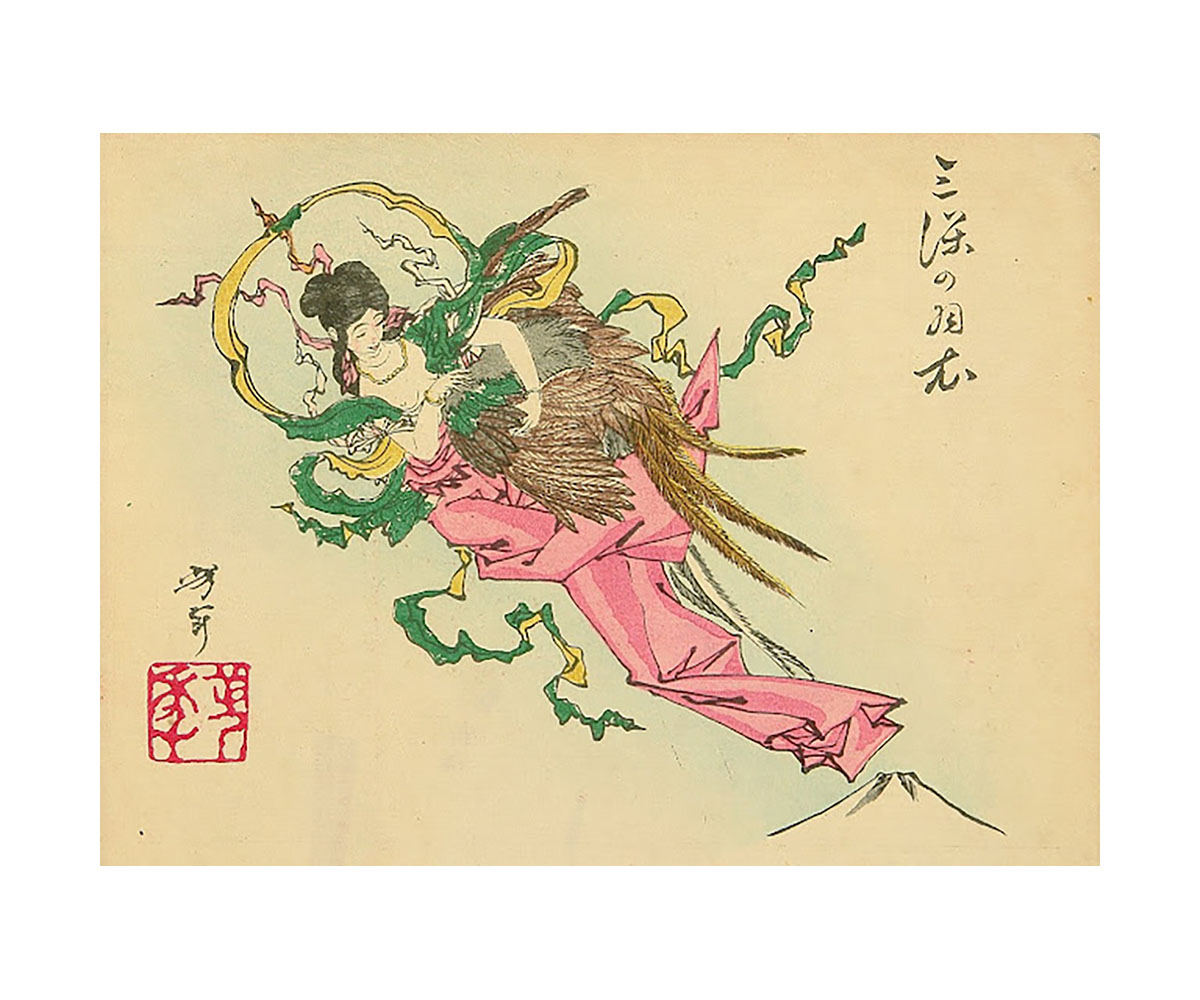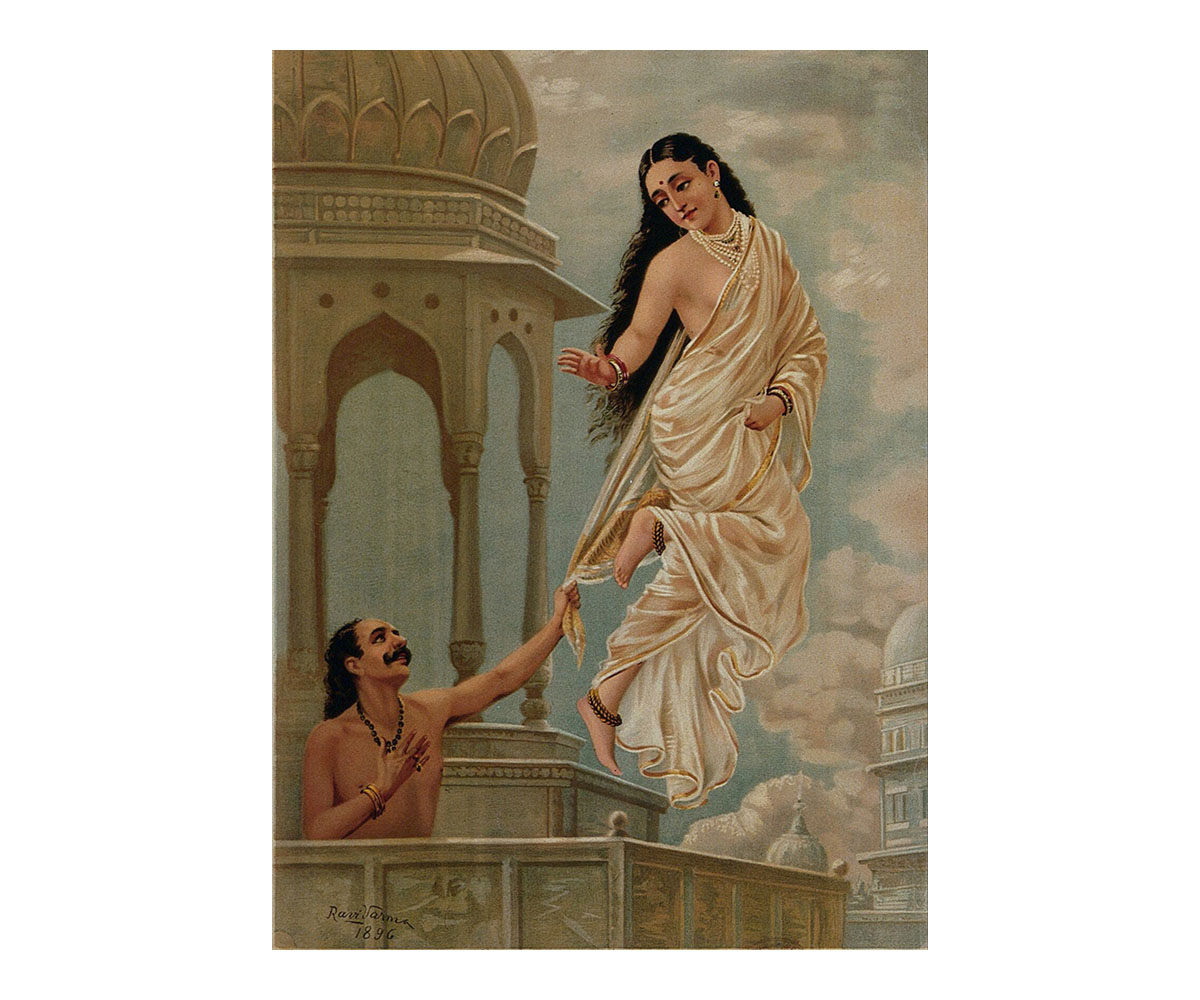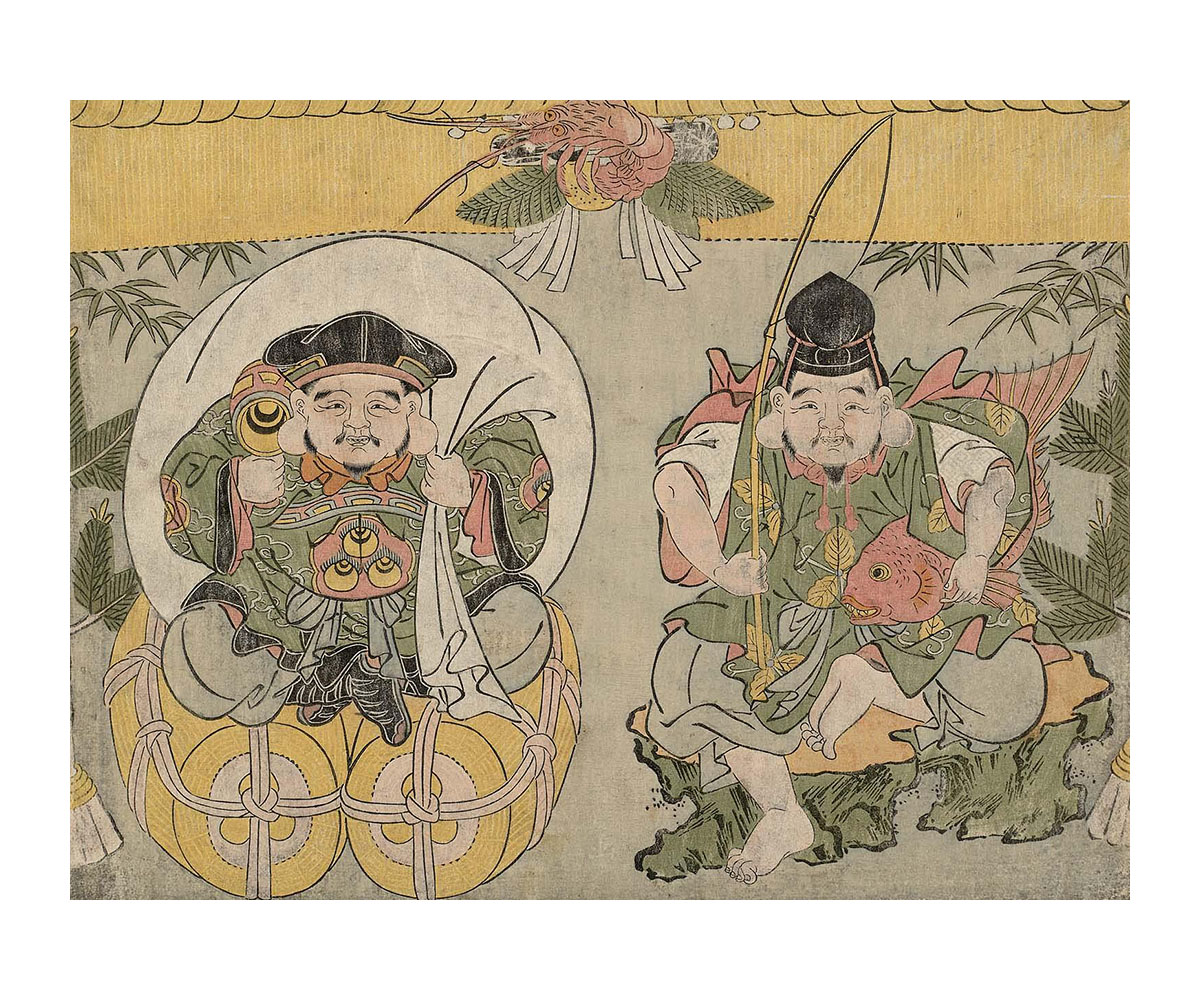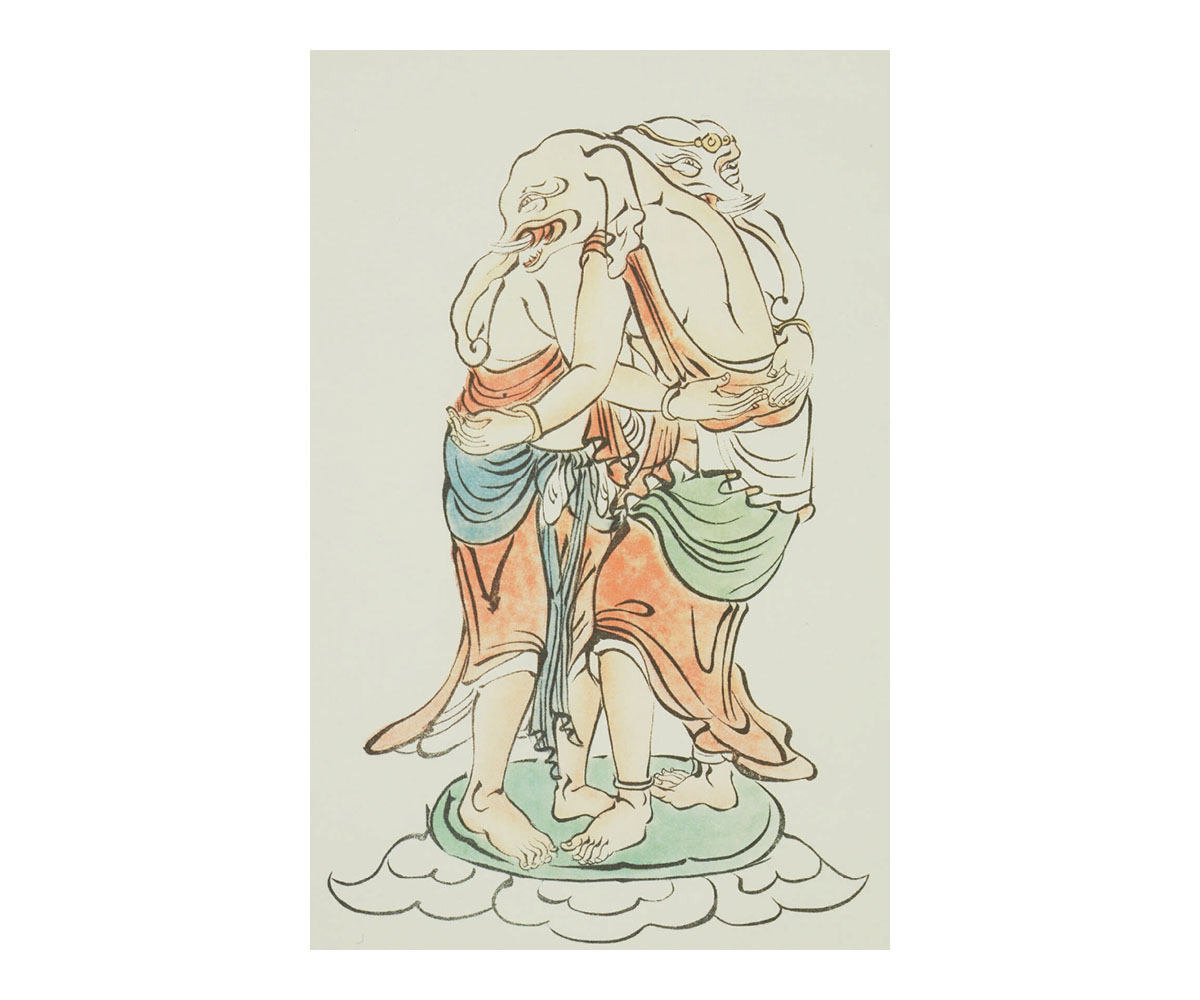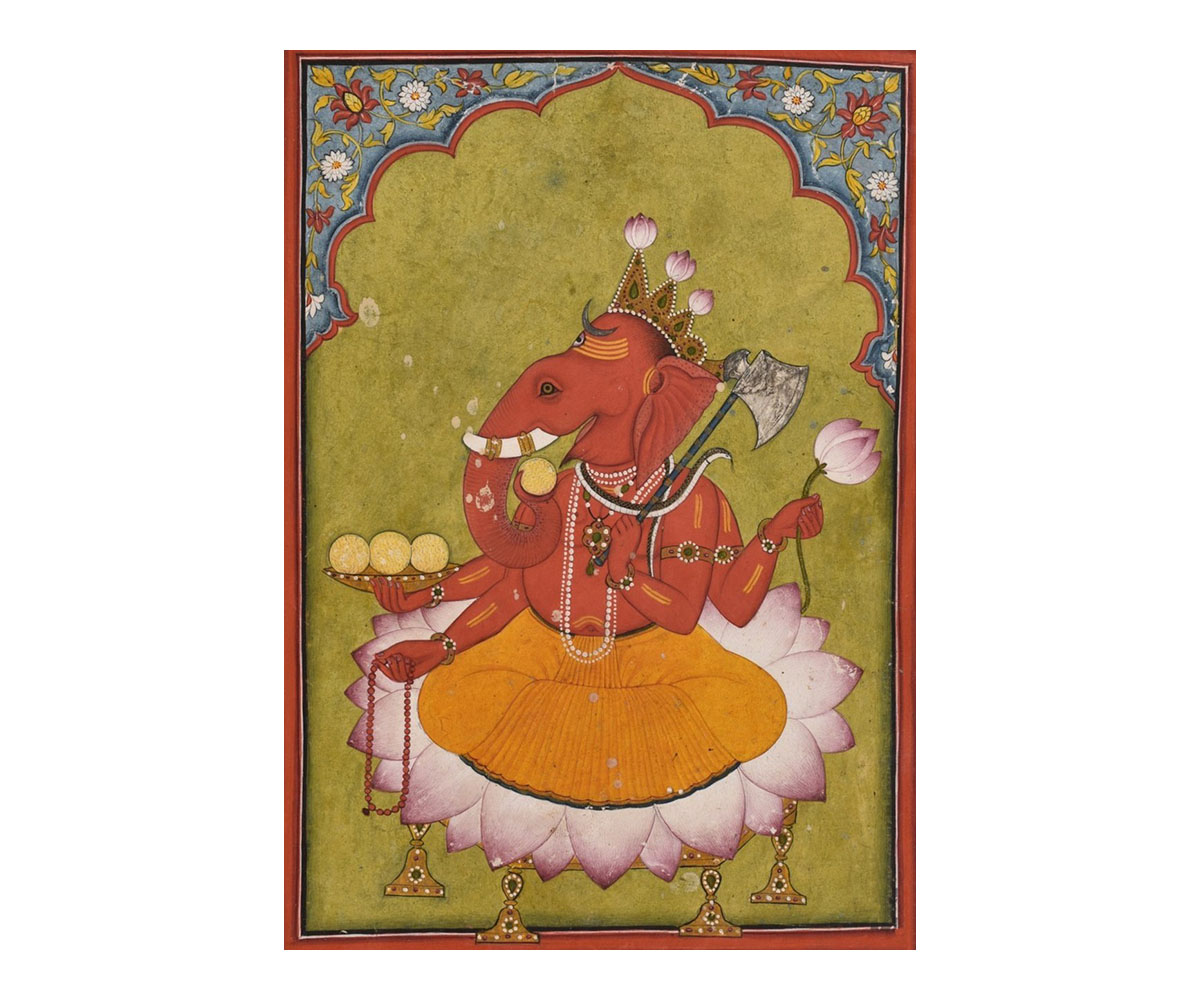PERSPECTIVES
Spiritual Transformations: Devī to Kami, India to Japan
In an 18th-century woodblock print from Japan, we see a whirling white dragon carrying a solemn, tranquil woman through the night sky as she plays a wooden lute, the edges of her robes flying in the wind. The image of a lute-playing woman atop a white animal might seem familiar to South Asian eyes — after all, this Japanese Buddhist kami (deity), called Benzaiten or Benten, has originated from the Hindu goddess of all learning, Saraswati.
Benten is amongst the many Vedic gods and goddesses who travelled to Japan via ancient and medieval Buddhist texts and teachings, taking on local forms. These reflect a synthesis of Hinduism, Buddhism and Shintoism — the indigenous religion of Japan centred around nature and its manifestations. Benten, ruling over ‘all that flows’ — music, water, wealth and time — retains many aspects of Saraswati including the veena which becomes the biwa (lute), the company of a white animal (in this case, a dragon in the place of a swan) and the multiple hands holding up spiritually symbolic weapons. She also holds a single-pronged vajra and a chakra, recognisable symbols from Buddhist and Hindu religious iconography. Just as Saraswati became Benten, Lakshmi became Kichijoten or Kisshoten, Kubera became Bishamon, and Shiva’s Buddhist manifestation Mahakala became Daikokuten — sometimes also represented in feminine form as Daikokunyo. Kisshoten in Japanese mythology is the wife/sister of Bishamon and the goddess of fertility and fortune, mirroring Lakshmi’s role. She is often depicted as holding a wish-granting jewel, kagome, paralleling the chintamani stone in Indian mythology. Another major Hindu god to take root in Japan, is the very popular elephant-headed Ganesha, the god of intellect, wisdom and valour: his counterpart is Kangiten or Kankiten, who is at once a benevolent and generous grantor of impossible wishes while also a volatile, punishing force.
These deities are widely worshipped across Japan with multiple shrines devoted to them. Benten, in particular, is revered as a prominent water deity, often conflated with Kisshoten, and has many water-front shrines to her name. Over time, these deities became a part of the Seven Lucky Gods who are believed to travel across the country throughout the year bringing luck, fortune and compassion to people. Studying the images of the Japanese deities alongside South Asian depictions of gods and goddesses can reveal what symbolic aspects have changed, remained or emerged anew. For instance, in one representation of Daikokuten, some recognisable aspects of Shiva such as his performing the tandava natyam (a divine dance tied to the cycle of life and death), his matted hair and his mythic rage are magnified. He is even depicted with symbols associated with the manifestations of the Hindu goddess of death and destruction, Kali, such as a string of cut heads around the neck. In other depictions of Daikokuten, we see the deity embodying Shiva’s calmer, meditative persona, while the physical form seems very different from the usual portrayals of Shiva.
Almost all of the elemental gods of Vedic Hinduism also found their place amidst the Tenbu, the name by which these travelling, transforming Hindu deities were known. Varuna, the god of the sky and seas, became Suiten; Chandra, the god of the moon, became Gatten; Indra, the king of the devas, became Taishakuten; and even Garuda, the king of birds and the divine mount of Vishnu, became the bird-beaked Karura. It is interesting to note that many of these formal metamorphoses were rooted in and emerged from the transliteration of the original names. As texts travelled across regions in translations, the altered names paralleled a transformation in form, spirit and the myths associated with the figures. Even Apsaras, female spirits embodying elements of nature in Hindu and Buddhist beliefs, and Rakshasas, malevolent and destructive demi-gods, had found their way to Japan in the forms of Tennin or Tennyo, heavenly women with varied roles and powers often depicted in loosely-draped colourful kimonos, and Rasetsuten, demons that torture humans and feed upon the flesh of the dead.
These syncretic spiritual embodiments, which emerged from the fusing of cross-cultural Hindu and Buddhist deities — from ancient India to China to Japan — and local Shinto beliefs, remind us of how globally connected our culture, philosophical and spiritual heritage are. Culture has never been unchanging or “pure”; it is a living, evolving process that celebrates the long history of global human and material entanglements.
Bibliography
Behl, Benoy K. Hindu Deities Worshipped in Japan. Chennai: The Hindu Group Publishing, 2019.
Kak, Subhash. “The Vedic Gods of Japan.” Accessed November 3, 2022. https://www.ece.lsu.edu/kak/VedicJapan.pdf.
Schumacher, Mark. “A to Z Photo Dictionary of Japanese Buddhist Statuary: Gods, Goddesses, Shinto Kami, Creatures and Demons.” Accessed November 3, 2022. https://www.onmarkproductions.com/html/buddhism.shtml.
Ludvig, Catherine. From Sarasvati to Benzaiten. University of Toronto, 2001. Accessed May 7, 2024. https://tspace.library.utoronto.ca/handle/1807/15465.






